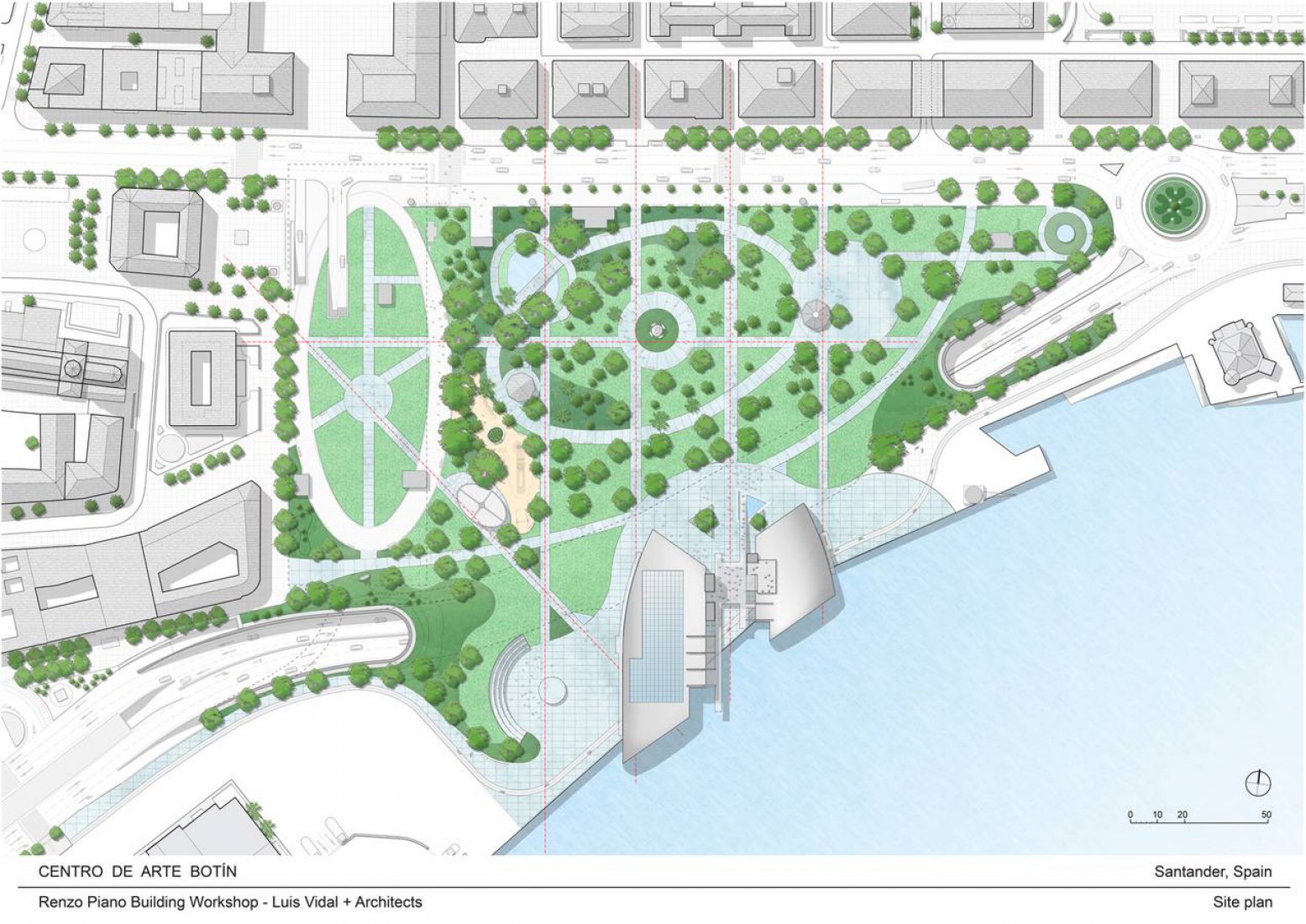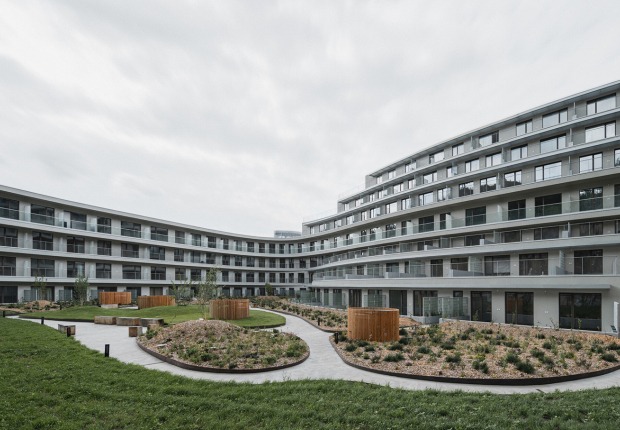Finished in parallel to the construction of the building for the Botín Foundation the a good part of the promenade has been pedestrianized connecting Santander's city centre within the sea through Peredas gardens which have been expanded until the access of the building, adding even greater importance in the actual urban structure.
The proposal of the architects has allowed the ground floor being free of construction and in that way, the building does not become a screen from which it would be impossible to see the sea. Now it is possible to see again the sea from the center of greater activity of Santander!
The Botín Center, which presents a floor plant with a shape that somehow reminds to a lungs, develops as two large cantilevers above the limit of the port, bringing users closer to the sea.
A vibrant facade is closed by large and light-colored pixels that make the volume of the building disappear among Santander's ever-gray sky.
Description of the project by Renzo Piano Building Workshop
The Centro Botín is a new space for art, culture and the diverse activities of the Fundación Botín. It will be constructed in the Jardines de Pereda, on the seafront of the city of Santander in north-western Spain. The project reclaims an area currently used as a car park, restoring it to the city. The site, organized as an extension of the city grid through the existing park, will provide direct access from the historic town centre to the sea and will enhance visual connections with the water.
The building will be a new landmark on the waterfront, both from a visual and cultural perspective, as well as a mean of boosting the activities of the Botín Foundation. Thanks to the Foundation’s diverse cultural and research programmes, it is expected that the centre will drive cultural, social and economic development in Santander.
By rerouting traffic on the existing Paseo del Muelle into a 200m-long tunnel, the existing Jardines de Pereda can be extended as far as the seafront, doubling its size. The Centro de Arte Botín sits in the new section of the park, right at the water’s edge. To its north, where various routes across the park from the city converge, is a new public plaza. An outdoor amphitheatre on the building’s west side can seat 2,000 people for concerts or film projections.
The centre is organized into two parts, a west and an east wing, joined by an elevated walkway that culminates in a platform cantilevered out over the sea.
The west wing of the building is an exhibition space: 2,500 sq m of 5m-high versatile spaces over two levels providing galleries and support areas. The upper level has a skylight system that allows some of the gallery space to be naturally lit.
The smaller east wing focuses on education and will accommodate a convertible 7.5m-high auditorium space with 300 removable seats and, on the building’s upper level, a multi-purpose area of approximately 255 sq m. The auditorium has a glazed façade to the south, offering the option to have speakers, actors or musicians performing against the backdrop of the bay with its traffic of ships.
Both buildings will be raising thanks to supporting columns. Together with the buildings' curved shape, this structure lightens the facility's presence on the site and allows clear views from the park to the sea. The curved edges also draw light and reflections off the water into the space under the building. The exterior will be clad with small off-white ceramic tiles that easily adapt to the shape of the building and that also have a shimmering, mother-of-pearl finish, which strengthens the building's luminosity, under Santander’s often grey sky.
Photography.- Rubén Pérez Bescós
























































